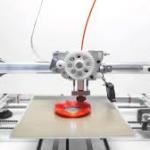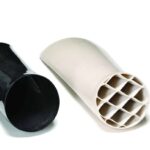Lonnie Love, group leader at Oak Ridge National Laboratory, says their facility is not an automotive manufacturer, but an automotive innovator. That’s part of the reason why the Department of Energy turned to the Tennesse-based Oak Ridge facility when they were looking to become the first organization to 3D print a car.
Using their ‘Big Area Additive Manufacturing’ technology, the Oak Ridge National Laboratory printed an entire Shelby Cobra-inspired electric vehicle using 20% carbon fiber reinforced plastics. The lab says the car will now act as a rolling laboratory, allowing for different components to be installed, tested and enhanced in real time.
Most importantly, though, the basic technology used to print the Cobra Replica could revolutionize the transportation industry. Oak Ridge’s BAAM system uses much less energy to 3D print cars and can pump out energy absorbing structures, which may allow for the tech to one day be used on a much wider scale.















